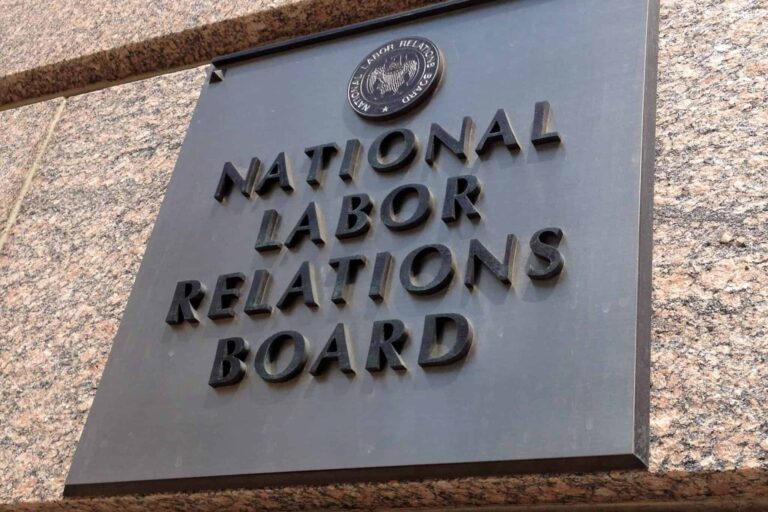
Holden Hopkins is a student at Harvard Law School.
In today’s News & Commentary, the anti-union campaign picks up ahead of next week’s vote at Mercedes Benz in Alabama, Vermont passes its version of the PRO Act, and the NLRB’s new joint-employer rule survives a legislative challenge.
Despite claiming neutrality, Mercedes Benz along with the Business Council of Alabama, a pro-employer advocacy group, have launched an advertising blitz urging autoworkers to vote no in next week’s union election. Alabama elected officials, including Governor Kay Ivey, have also urged workers to vote no.
Holt and others have previously reported on the union drive at the Vance, Alabama plant. While the outside pressure has picked up, union organizers are feeling encouraged in the wake of last month’s UAW win in Tennessee.
The election is scheduled for May 13 – 17.
The Vermont legislature passed a bill inspired by the proposed federal “Protecting the Right to Organize”, or PRO Act, most recently sponsored in the US Senate by Vermont Senator Bernie Sanders. The state’s version of the bill, called S.102, bans captive audience meetings, allows card checks for public sector unions, and extends organizing rights to domestic workers excluded from coverage under the NLRA.
The Vermont House of Representatives passed S.102 on Wednesday which the state Senate had passed last year. Despite the original bill including coverage for agricultural workers, who like domestic workers were excluded from the NLRA, an amendment to the House version removed them from the bill. Interest groups including the Vermont Dairy Producers Alliance raised concerns about strikes of agricultural workers disrupting supply chains or causing animal welfare issues.
Organizers with Migrant Justice called the inclusion of agricultural workers “a basic question of equity, fairness and justice.” The exclusion of domestic and agricultural workers from the federal legislation was the result of a compromise with Southern Democrats, who feared labor protections would upset the Jim Crow-era political order. At the time, industry groups also made arguments for the exclusion of agricultural workers which resemble those advanced in Vermont.
While agricultural workers are not treated as employees under S.102, the bill does establish the “Agricultural Worker Labor and Employment Laws Study Committee”. The purpose of that committee is to study how state labor and employment laws apply to agricultural workers and identify options for legislative action to increase coverage.
Other provisions of the bill—which passed with a veto-proof majority—have received praise from pro-union advocacy groups.
The NLRB’s joint-employer rule has survived a legislative challenge following President Biden’s veto of a Congressional measure to overturn the rule. Bloomberg Law reported on Tuesday that the Republican-controlled House of Representatives would be unable to achieve the two-thirds majority required to overcome that veto. The rule was originally challenged under the Congressional Review Act, as Swap reported in January.
While legislative challenges to the rule appear to be exhausted, it still faces judicial hurdles. As John reported, the rule is currently on hold following a challenge in the Eastern District of Texas. Today, the NLRB announced they are appealing that decision to the 5th Circuit.






Daily News & Commentary
Start your day with our roundup of the latest labor developments. See all
May 19
Mercedes workers in Alabama vote against unionizing with the UAW; electric bus plant union in Alabama ratifies contract; California shelves "right to disconnect" bill.
May 16
Bill banning captive audience meetings expected to pass in Illinois and college campus unions taking action regarding institutional responses to pro-Palestine student protests.
May 15
King County raises minimum wage to highest in the nation; Walmart announces layoffs; Lawmakers urge National Mediation Board to help flight attendants
May 14
Massachusetts’ lawsuit against ride-share companies goes to trial, the Eleventh Circuit rules in favor of a transgender sheriff deputy in a Title VII lawsuit, and Alabama's governor signs anti-union legislation.
May 13
Canadian public sector unions challenge a government return-to-office requirement; Las Vegas hotel union workers walked off the job this weekend for a 48-hour strike; a California farmworkers union defends against charges of coercion in a recent organizing drive.
May 12
UAW prepares for Mercedes election tomorrow; Argentina sees general strike; Apple organizing faces setback.